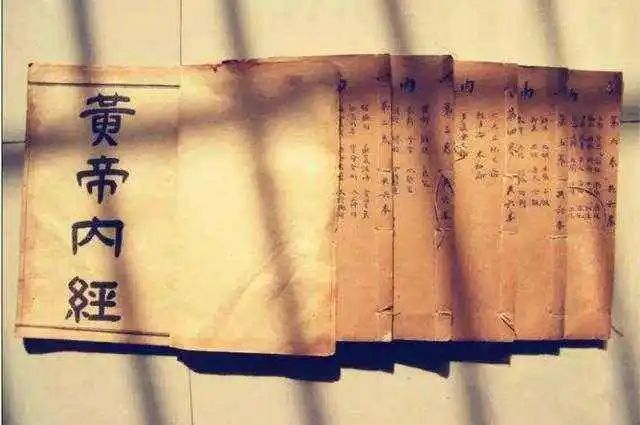
Bloodletting Therapy (Cìluò Fàngxuè Liáofǎ) is a unique acupuncture treatment method in Traditional Chinese Medicine (TCM). It is one of the most commonly used therapeutic techniques since the era of the Huangdi Neijing (Yellow Emperor’s Classic of Internal Medicine), which even considers bloodletting as the first choice for treating diseases and alleviating suffering. Depending on the patient’s specific condition, a three-edged needle or a thick, sharp needle is used to puncture certain acupuncture points or superficial blood vessels on the patient, allowing a controlled amount of blood to be released to achieve therapeutic effects.
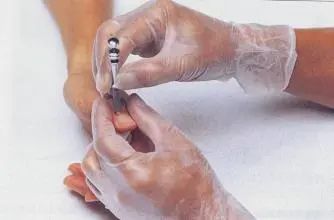
Effects of Bloodletting Therapy: It has a beneficial bidirectional regulatory effect on the blood system.
Research indicates that bloodletting therapy can promote metabolism, stimulate bone marrow hematopoiesis, accelerate metabolic processes, improve microcirculation and vascular function, facilitate the elimination of harmful substances from the blood, and ensure beneficial substances are timely replenished into the bloodstream, thereby helping the body re-establish homeostasis and restore normal physiological functions. By improving microcirculation, it can also prevent excessive inflammatory responses and promote recovery from inflammation.
Understanding Your Health Status Through Blood Color: Which type do you belong to?
1. Dark black blood, resembling ink, indicates a long-standing illness, suggesting that blood stasis has persisted for a long time, obstructing the vessels. 2. Blood mixed with water indicates rheumatism or liver disease. 3. Blood containing jelly-like mucus suggests damp-heat accumulation and stagnation over time. 4. Light-colored blood indicates inflammation or an early-stage illness. Purple-red blood indicates a new injury. 5. Blood resembling wash water indicates severe chronic dampness. 6. Clear watery fluid indicates edema. 7. Presence of blisters indicates heavy dampness. 8. Foamy liquid suggests wind pathogen. 9. A large volume of blood indicates a long illness duration. 10. A small volume of blood indicates a short illness duration or deep-seated condition. 11. If, after cupping, one feels a rush of heat upon inserting a hand into the cup, it indicates heavy damp-heat. 12. Slow bleeding, even after multiple punctures, suggests qi deficiency and blood deficiency. 13. Light bleeding that does not coagulate easily indicates blood deficiency. 14. Blood that settles quickly and coagulates rapidly indicates qi deficiency.
Bloodletting from the Fingers, also known as Minor Bloodletting (Xiǎo Luò Fàngxuè), is generally performed near the Jing points or at various extremities where small, hair-like red or purple blood vessels are found. This acupuncture method involves puncturing to release dark blood to treat diseases.
Clinical validation shows that Minor Bloodletting can resolve various difficult diseases. For example:
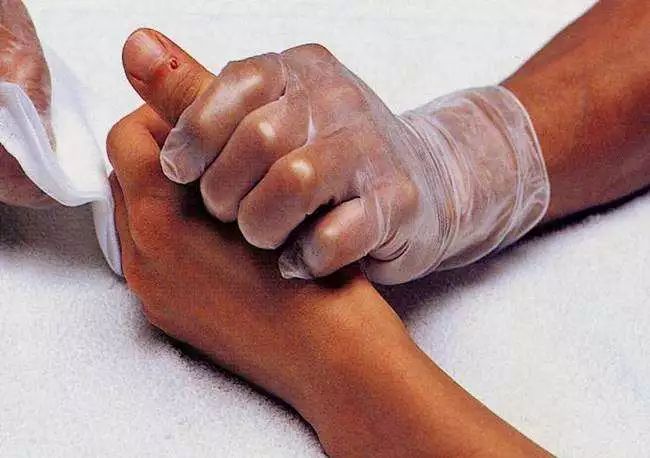
Case 1: Anxiety
Mr. Li, 33 years old, overweight, has been under immense work pressure for a long time, feeling anxious and restless, nearly on the verge of collapse. Upon examination, stagnation was observed near the Zhongchong (中冲) point on the dorsal side of the first segment of the middle finger, with small blue veins bulging. After puncturing, a significant amount of dark blood was released, resulting in a refreshing feeling and substantial improvement in his condition. A disposable blood collection needle can be used instead of a three-edged needle.
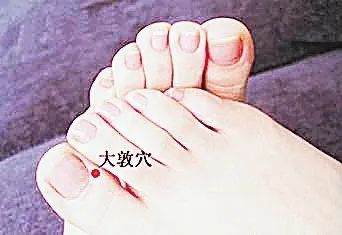
Case 2: Nasal Ulceration
Mr. Ji, 36 years old, has a small ulcer in the right nostril that worsens every winter, persisting for many years with unbearable pain, and has not been cured despite multiple treatments. Upon examination, several small red blood vessels were found at the Dazhong (大敦) and Yinbai (隐白) points on the right big toe. After puncturing, dozens of drops of dark blood were released, and the ulcer receded the next day, with no recurrence for two years.
Case 3: Oral Ulcers
Mr. Zhao, 50 years old, has a robust constitution but is busy with work and social engagements, often talking. He is prone to heat, prefers cold, and suffers from recurrent oral ulcers and hoarseness every summer. Upon examination, small red blood vessels were found near the Jing point of the big toe. After several punctures, significant improvement was noted, with no obvious heat-related ulcers in recent years. Additionally, after puncturing on the back, his hoarseness also improved.
Case 4: Increased Vaginal Discharge
Ms. Gou has abnormal and increased vaginal discharge, which has not been cured despite various treatments. Upon examination, several prominent red blood vessels were found around the Lìduì (厉兑) point on the second toe. After a small amount of blood was released through puncturing, her symptoms improved, and after another release a week later, she was clinically cured.
Case 5: Sensitivity and Suspicion
Mr. Qian, 26 years old, suffers from nervous sensitivity and suspicion, often suspecting others of having malicious intentions or plotting against him. His eyes appear overly bright and exposed. Upon examination, a segment of a bulging blood vessel, as thick as a noodle, was found near the Shenmen (神门) point on the ear. After puncturing, a large amount of stagnant blood was released, resulting in a calmer demeanor and significant improvement in his suspicion.
It is said that when a disease manifests, the corresponding acupuncture point should be treated; when the disease resolves, the corresponding blood stasis will gradually disappear. If the disease does not resolve, puncturing can be repeated every three days until recovery, with each puncture stopping when fresh blood is released, as excessive bleeding is not beneficial.
Precautions for Bloodletting:
1. Bloodletting Technique
1. After identifying the blood point, puncture quickly with wrist strength, aiming for 6-9 punctures within one second.
2. For bulging vessels, one puncture should suffice, as blood will often spurt out; be prepared to avoid splattering.
2. Reactions After Bloodletting
1. 80% of patients feel relaxed and comfortable after bloodletting, while 20% may experience increased pain. Those who feel increased pain tend to heal faster than those who feel immediate relief.
2. If there is no sensation after 5-10 punctures, further bloodletting is not advisable.
3. Timing of Bloodletting
1. For inflammation or acute pain, bloodletting can be done once a day, and after symptoms improve, every 3-5 days.
2. For chronic patients, every other day is recommended, and once effective, every 5-7 days. Bloodletting can be performed after cupping for 15-20 minutes.
4. Contraindications for Bloodletting
1. Patients with significant bleeding or those prone to subcutaneous bleeding.
2. Severe heart disease.
3. Patients with sexually transmitted diseases, skin diseases, or skin ulcers.
4. Pregnant women or those menstruating, and patients with leukemia should not undergo bloodletting.
5. Patients who are overly hungry or full, frightened, or excessively tense should not be treated.
6. For patients with liver disease, bloodletting should be approached with caution (as with any other treatment); avoid contact with the blood, especially on open wounds, to prevent transmission.
5. Treatment for “Needle Sickness”
1. Immediately warm the patient’s Dazhui (大椎) point with your palm.
2. Pinch the Renzhong (人中) and Hegu (合谷) points simultaneously.
3. Press Neiguan (内关), Yongquan (涌泉), and Taichong (太冲); if possible, have the patient drink a cup of warm sugar water or glucose immediately.
4. Have the patient lie down (with the head lower than the feet).
6. Diagnosing Through Blood Analysis
1. Light-colored blood indicates inflammation or an early-stage illness. Dark blood mixed with water indicates long-standing illness and blood stasis.
2. If pain decreases during the day but worsens at night, it indicates blood stasis, necessitating another puncture until relief is achieved.
The above is for reference only; non-professionals should not attempt this on their own.Appendix: Bloodletting Therapy for 24 Difficult Diseases
1. Cerebral Hemorrhage (Stroke):
Refers to bleeding caused by the rupture of blood vessels within the brain due to non-traumatic causes, accounting for 20%-30% of all strokes, with a mortality rate of 30%-40% in the acute phase. The primary causes are related to cerebrovascular diseases: hyperlipidemia, diabetes, hypertension, vascular aging, smoking, etc.
Patients who bleed will often be comatose; puncturing the Yintang (印堂), Taiyang (太阳), Taichong (太冲), and all ten fingers to release 1-5 drops of blood can help them regain consciousness sooner and reduce the severity of hemiplegia. If a patient is comatose for more than 24 hours, the rate of hemiplegia is over 90%. If it exceeds 72 hours, there is a 100% chance of hemiplegic sequelae, making treatment extremely difficult. Therefore, early awakening is a priceless secret technique; once the patient regains consciousness, puncturing Dazhui, Quchi (曲池), Weizhong (委中) to release blood may lead to recovery.
2. Neuralgia:
For pain along the Gallbladder meridian (outer thigh and calf), check for bulging blood vessels around the Yanglingquan (阳陵泉) and Fenglong (丰隆) points. If present, bloodletting often leads to recovery.
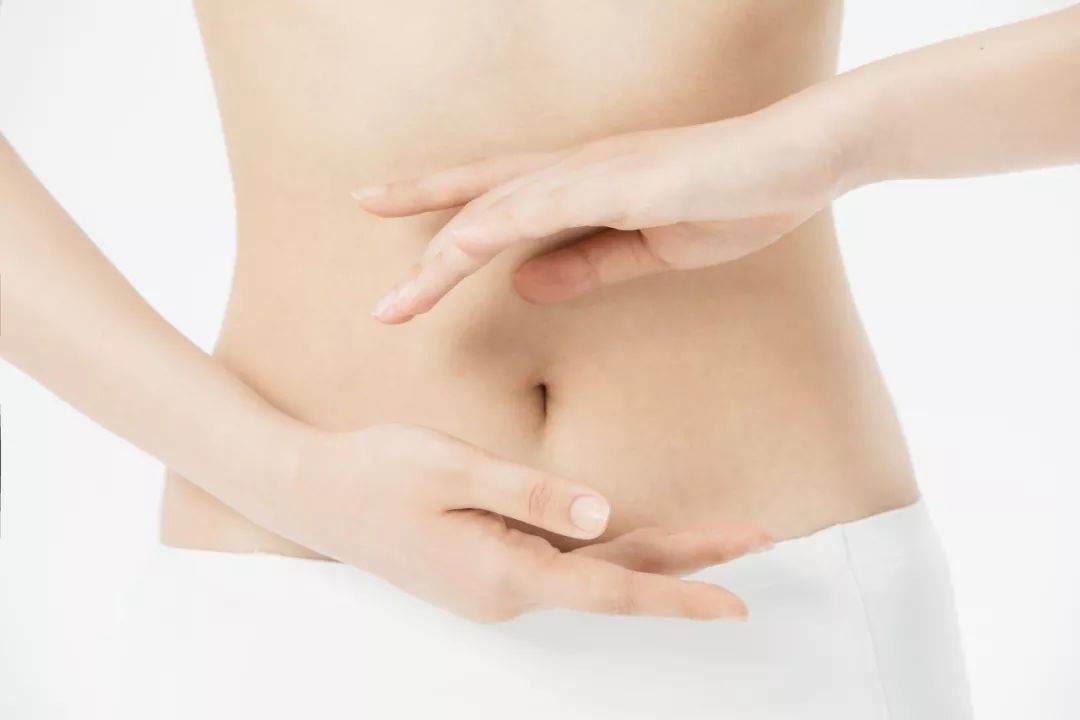
3. Long-standing Boils and Abscesses:
Boils: Red, swollen, hot, and painful, shallow and large, easy to resolve if not yet pus-filled, but difficult to heal if pus has formed. Caused by heat toxins and qi-blood stagnation.
Abscesses: Swollen without a head, unchanged skin color, unclear borders, little pain, difficult to resolve if not yet pus-filled, but hard to heal if pus has formed. Caused by cold pathogens obstructing qi and blood stagnation.
Furuncles: Initially small like millet, deep-rooted, needle-like, white-tipped, and painful. Caused by pathogenic toxins and qi-blood stagnation.
Carbuncles: Superficial, localized, small and round, mildly red, swollen, and painful, easy to resolve, often recurring. Caused by damp-heat accumulation.
Boils, abscesses, furuncles, and carbuncles are four types of surgical conditions occurring on the body surface. Bloodletting is performed at the Xin (心) point.
4. Initial Stage of Conjunctivitis and Stye:
Puncturing the Taiyang (太阳) point to release 7-9 drops of blood, and puncturing the tips of the middle toes to release 3-5 drops of blood can lead to recovery by the next day.
5. Severe Rheumatism in the Legs:
This is a group of diseases affecting joints, bones, muscles, blood vessels, and related soft or connective tissues, most of which are autoimmune diseases. The onset is often insidious and slow, with a long course and a genetic tendency. Diagnosis and treatment can be challenging.
Puncturing 3 inches beside the third, fourth, and fifth thoracic vertebrae can yield significant results; many severe cases have been cured in 1-2 sessions.
6. Gastric and Duodenal Ulcers:
These are very common diseases characterized by localized round or oval defects in the gastric or duodenal wall. Patients often experience periodic upper abdominal pain, acid reflux, and belching. This condition tends to recur and has a chronic course.
Puncturing the blue veins from the Neiting (内庭) to the Jiexi (解溪) points, and near the outer ankle can release blood. For gastric ulcers, blood vessels should be sought within 0.5 inches above and 2.5 inches below the Tiaokou (条口) point.
7. Chronic Nephritis:
Characterized by proteinuria, hematuria, hypertension, and edema as basic clinical manifestations, with varying onset patterns and slow progression, potentially leading to chronic renal failure.
(1) Bloodletting at the Naoyu (臑俞) point can resolve yellowish fluid; once the yellow fluid is gone, the patient will recover.
(2) Around the kidneys.
(3) Bloodletting around the navel (do not puncture the center of the navel).
8. Hepatitis Bloodletting:
Usually refers to liver cell damage caused by various pathogenic factors such as viruses, bacteria, parasites, chemical toxins, drugs, alcohol, and autoimmune factors, leading to a series of discomfort symptoms and abnormal liver function indicators.
Puncturing the Yangjiao (阳交), Zusanli (足三里), Quchi, Yanglingquan, and Sanyinjiao (三阴交) points.
9. Cirrhosis with Ascites:
This is a common chronic progressive liver disease caused by one or more factors leading to diffuse liver damage. In China, most cases are post-hepatitis cirrhosis, with a small number being alcoholic or schistosomiasis-related cirrhosis. Late-stage complications often include upper gastrointestinal bleeding, hepatic encephalopathy, secondary infections, splenomegaly, ascites, and cancer.
Use the acupuncture points for hepatitis plus: Shenshu (肾俞), Yaoyang (腰俞), Tiaokou (条口) (0.5 inches above and outside), and Ganshu (肝俞).
10. Hemorrhoids Special Points:
A common disease located at the anal area, which can occur at any age, but the incidence increases with age.
(1) Chuanjiao (龊交) point (located at the junction of the upper gum and upper lip) can be found at the white granule point; 1-3 sessions can lead to recovery.
(2) For red, swollen, and ulcerated anal areas, puncturing Weizhong can relieve pain.
11. Insomnia:
Refers to the inability to fall asleep or maintain sleep, leading to insufficient sleep. Also known as sleep onset and maintenance disorders, it is a common condition caused by various factors, resulting in difficulty falling asleep, shallow or infrequent sleep, early awakening, and poor sleep quality.
Insomnia often causes significant suffering and psychological burden for patients, and the misuse of sleeping medications can harm other aspects of health.
(1) Shenmen, Xingjian (行间), Zusanli.
(2) Dazhui, Shendao (神道), Zhongwan (中脘), puncturing followed by cupping.
12. Cervical Spondylosis:
Pain points include Tianzong (天宗), Jianzheng (肩贞), and Shizhe (尺泽) points.
13. Chest Internal Injuries:
Puncturing Dazhui, Jianjing (肩井), and then the injured area.
2. Bloodletting at the joints.
14. Shoulder Periarthritis:
Puncturing the Kidney Point (肾关) (1.5 inches below Yinlingquan), and Shizhe point can yield results in one session.
15. Acute and Chronic Throat Diseases:
Puncturing Dazhui, Erjian (耳尖), and the ear back vein, Shaoshang (少商), Quchi, Taiyang can relieve pain after bloodletting.
16. Impotence:
(1) Puncturing Shenshu, Fuliu (复溜) to release blood, Guanyuan (关元), and Shenshu with cupping for 15 minutes.
(2) Puncturing Sanyinjiao, Mingmen (命门), and cupping at Shenshu, and Xuehai (血海).
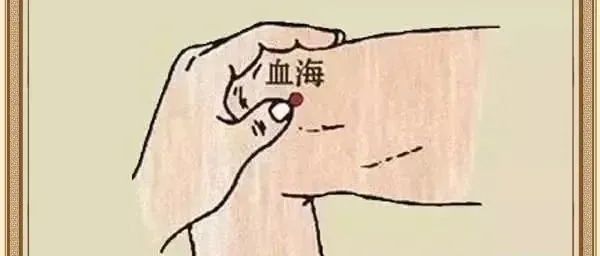
17. Hypertension:
Puncturing Taiyang, Dazhui, Erjian, Quchi can lower blood pressure immediately after bloodletting; note: do not drink water within one hour after bloodletting, as it may reduce effectiveness.
1. Bloodletting points.
18. Asthma:
(1) Puncturing Dazhui, Feishu (肺俞), Fengmen (风门), Gaomang (膏盲), and Lieque (列缺) for bloodletting. Cupping at Zhongfu (中府) and Dazhui for 15 minutes.
19. Hyperlipidemia:
Puncturing Dazhui, Taiyang, Yaoyang, Weizhong, and Quchi.
20. Rheumatic Heart Disease:
Puncturing Yangjiao, Shizhe, and Taiyang.
21. Eyelid Pterygium:
Puncturing Shaoze (少泽), Zhiyin (至阴), Erjian, and Dazhui every other day for a ten-day course.
22. Otitis Media:
Puncturing the outer ankle joint.
23. Epilepsy:
(1) Puncturing Taiyang, Quchi, Weizhong, Yangjiao.
(2) Puncturing Shaoshang, Renzhong for bloodletting. Cupping at Ganshu and Dazhui for 15 minutes.
(3) Finding pain points at the lower part of the cervical vertebrae and puncturing Neiguan with a plum blossom needle to release blood.
24. Mental Illness:
Puncturing Taiyang, Quchi, Weizhong, Taichong, Yangjiao, Fenglong, and Xinyu (心俞) followed by cupping after bloodletting.
The Secret of Bloodletting:
For diseases that have not been cured after prolonged treatment, when all methods have failed, bloodletting should be performed on the bulging blood vessels at the ankles, elbows, wrists, and knees, which may yield unexpected results.
Bloodletting is generally not recommended at night; it is best performed around noon.
 Copyright Notice: This content and images are compiled from the internet, non-commercial use; if there is any infringement, please contact the editor for deletion. Please indicate the source when reprinting.Reminder: The above content is for reference only and may not be suitable for all individuals; it is recommended to adjust under the guidance of a physician.
Copyright Notice: This content and images are compiled from the internet, non-commercial use; if there is any infringement, please contact the editor for deletion. Please indicate the source when reprinting.Reminder: The above content is for reference only and may not be suitable for all individuals; it is recommended to adjust under the guidance of a physician.

